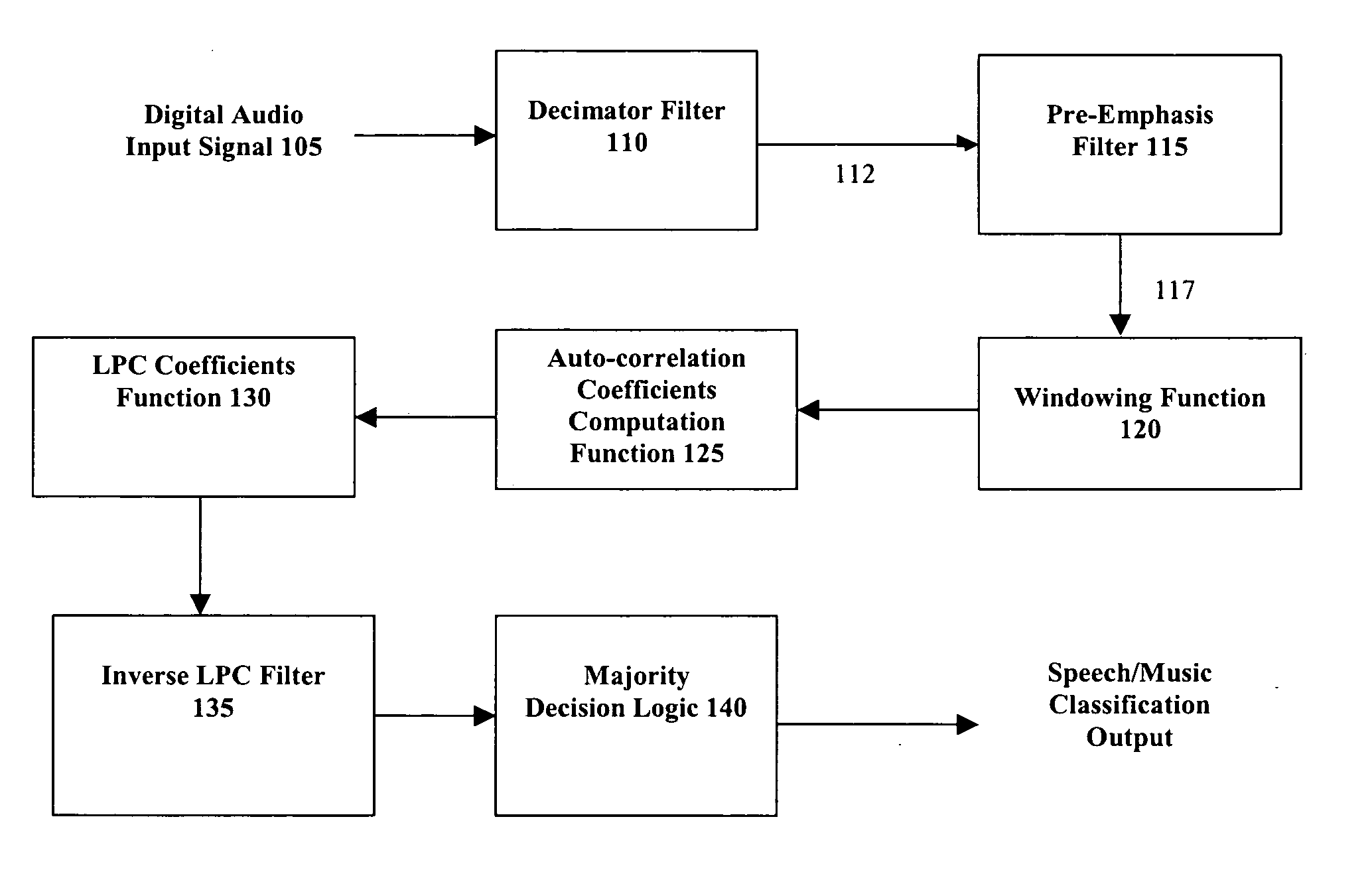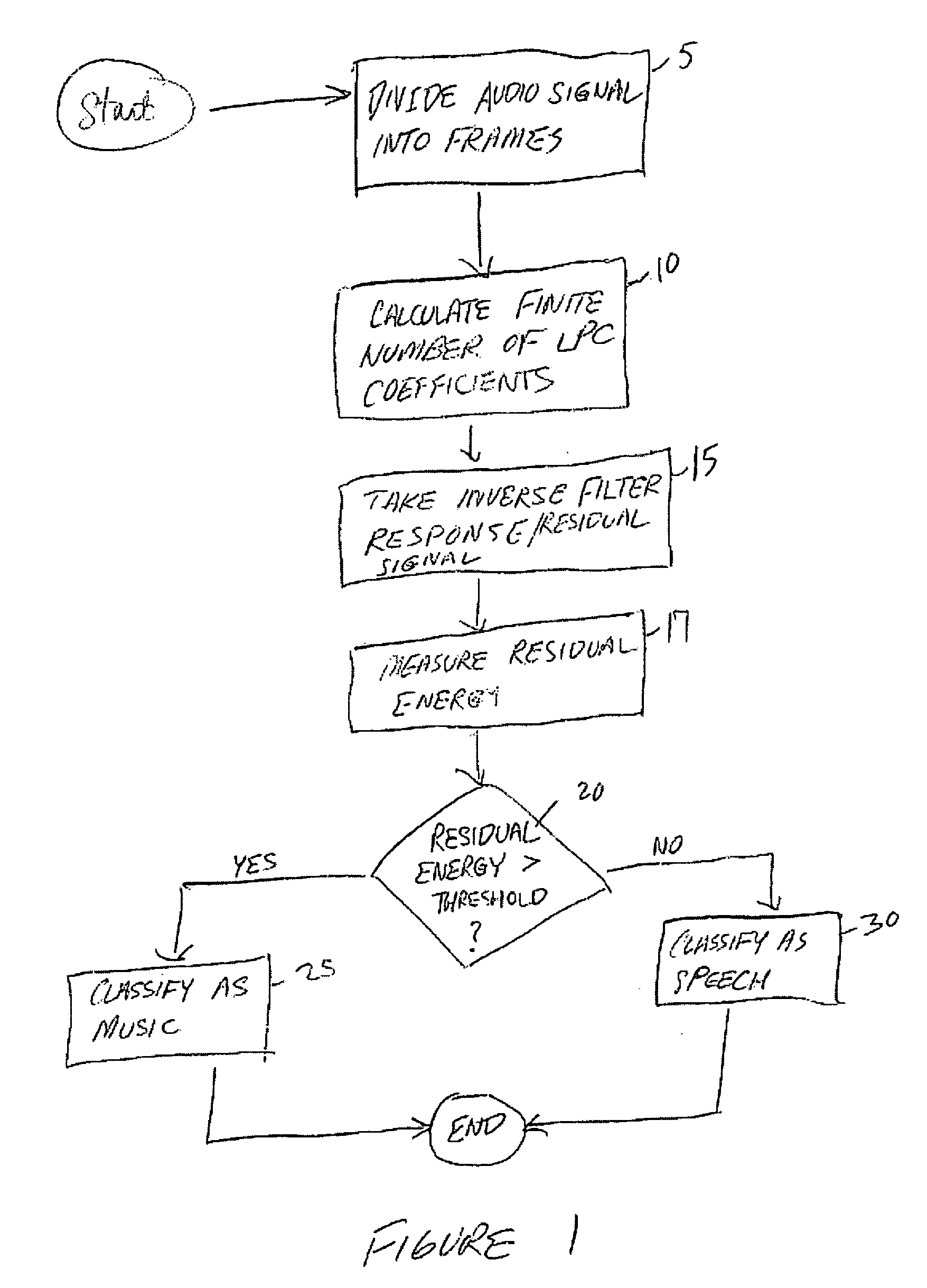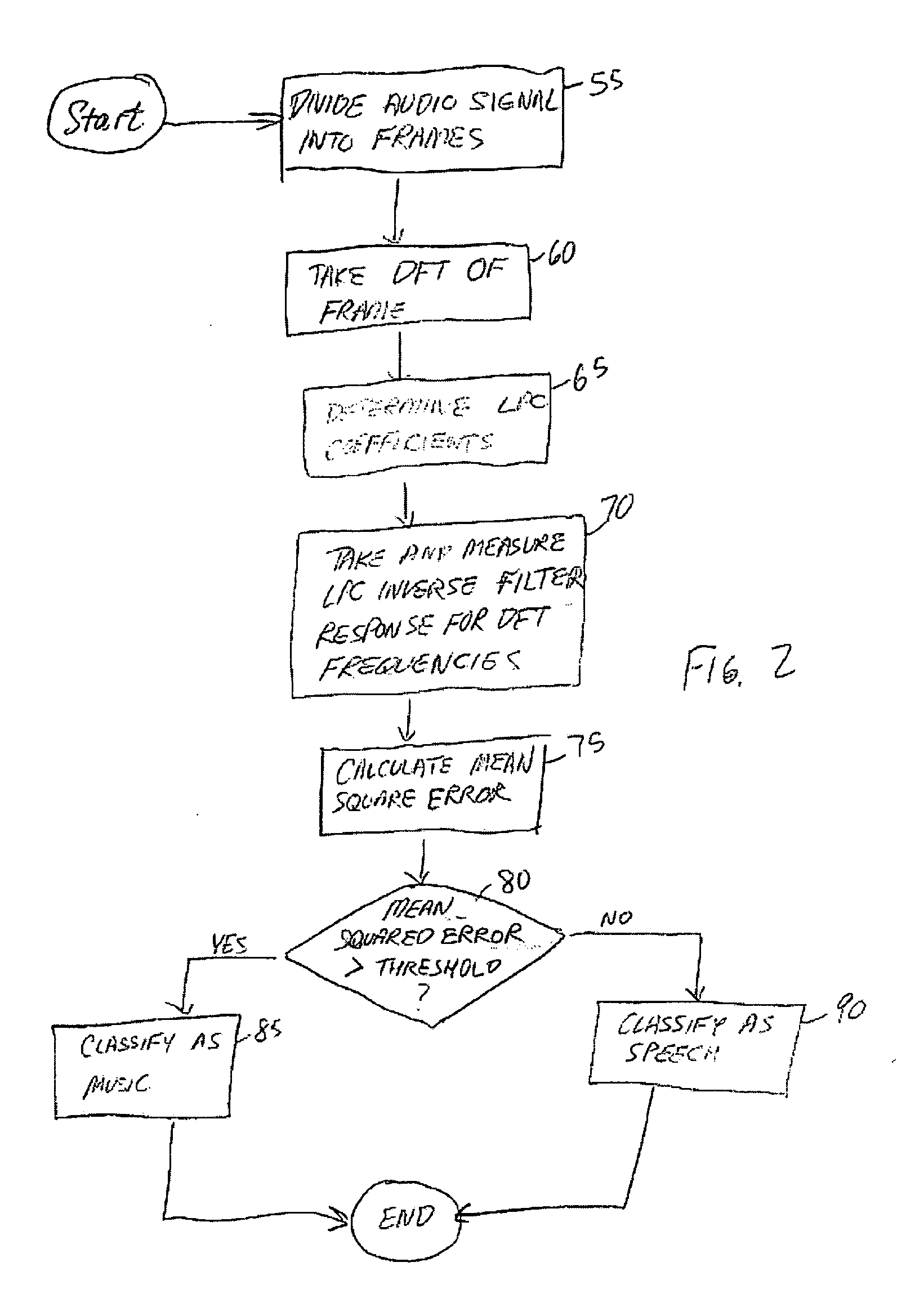Classification of speech and music using linear predictive coding coefficients
a technology of predictive coding coefficients and speech and music, applied in the field of speech analysis, instruments, electrophonic musical instruments, etc., can solve the problems of further limitations and disadvantages of conventional and traditional approaches
- Summary
- Abstract
- Description
- Claims
- Application Information
AI Technical Summary
Benefits of technology
Problems solved by technology
Method used
Image
Examples
Embodiment Construction
[0036] Referring now to FIG. 1, there is illustrated a flow diagram for classifying whether a digital audio signal is speech or music. At 105, the digital audio signal is divided into a set of frames. The frames comprise a fixed number of digital audio samples from the digital audio signal. Additionally, frames can be processed in a number of ways, such as by a decimator, pre-emphasis filter, or a windowing function, to name a few.
[0037] At 110, a finite number of Linear Prediction coefficients (LPC) are calculated for each frame. In general, the inherent limitations of the human vocal tract allow a speech signal spectrum to be shaped by fewer LPC coefficients than a music signal. Accordingly, at 115 the inverse filter response of the frame to an inverse filter according to the LPC coefficients (the residual signal) calculated during 110 is taken and the residual energy is measured at 117. The residual energy of the filter response is compared at 120 to an energy threshold.
[0038] ...
PUM
 Login to View More
Login to View More Abstract
Description
Claims
Application Information
 Login to View More
Login to View More - R&D
- Intellectual Property
- Life Sciences
- Materials
- Tech Scout
- Unparalleled Data Quality
- Higher Quality Content
- 60% Fewer Hallucinations
Browse by: Latest US Patents, China's latest patents, Technical Efficacy Thesaurus, Application Domain, Technology Topic, Popular Technical Reports.
© 2025 PatSnap. All rights reserved.Legal|Privacy policy|Modern Slavery Act Transparency Statement|Sitemap|About US| Contact US: help@patsnap.com



